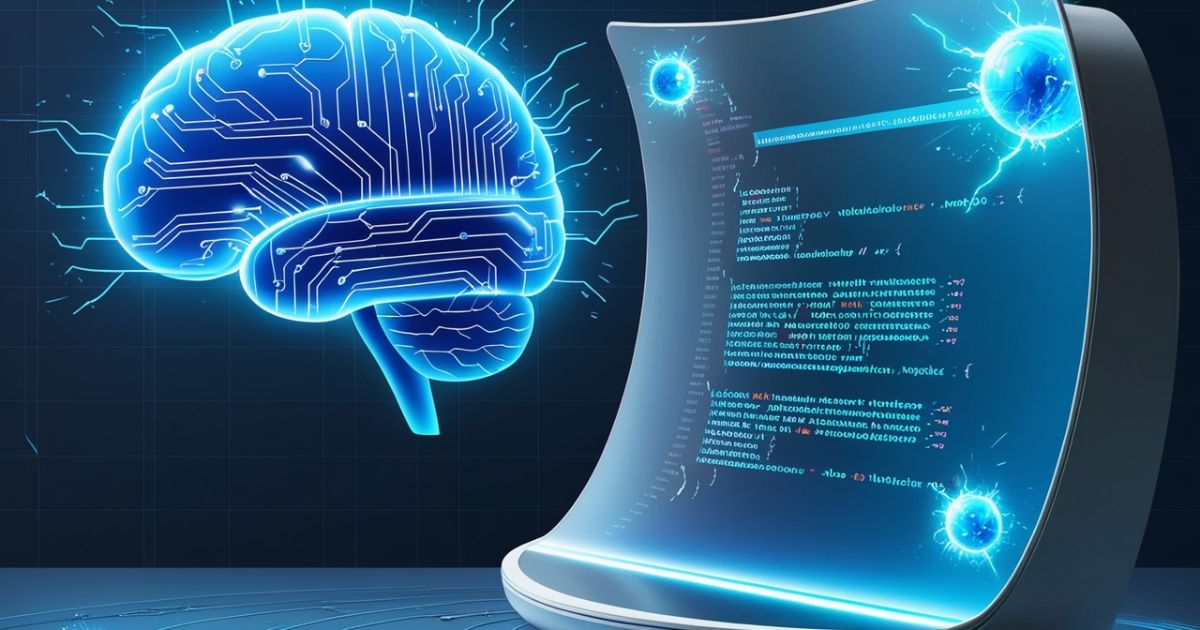Introduction to Harmonicode
In today’s rapidly advancing technological landscape, Harmonicode has emerged as a revolutionary concept that’s transforming how we approach software development. This innovative methodology combines the precision of coding with the principles of harmony to create more sophisticated and user-friendly technological solutions.
The essence of Harmonicode lies in its unique ability to merge technical excellence with aesthetic appeal, setting it apart from conventional development approaches.
Harmonicode represents more than just another programming methodology; it embodies a comprehensive philosophy that addresses the growing need for balance in modern software development.
By integrating clean code practices with artistic principles, it creates a framework where functionality and beauty coexist seamlessly. This revolutionary approach has captured the attention of developers and tech enthusiasts worldwide, promising to reshape the future of software creation.
The Principles of Harmonicode
To fully appreciate Harmonicode, one must understand its underlying principles. These guiding philosophies ensure that the approach remains both practical and visionary, setting it apart from conventional coding techniques.
Balance Between Functionality and Design
At the heart of Harmonicode lies the crucial principle of achieving perfect harmony between functional efficiency and design excellence. This balance between functionality and design goes beyond surface-level aesthetics, diving deep into the core architecture of software solutions.
Modern applications developed using Harmonicode principles demonstrate how powerful functionality can coexist with intuitive design, creating experiences that users find both practical and engaging.
Emphasis on Clean Code
Clean code serves as a fundamental pillar of the Harmonicode philosophy. This principle emphasizes the importance of writing code that is not only functional but also maintainable and scalable.
Through proper documentation, consistent naming conventions, and modular architecture, Harmonicode ensures that code remains accessible and understandable for future development teams.
User-Centric Development
The commitment to user-centric development stands as another crucial aspect of Harmonicode. This approach prioritizes user needs and experiences throughout the development process, ensuring that the final product not only meets technical requirements but also provides an exceptional user experience.
Through continuous feedback loops and iterative improvements, Harmonicode creates solutions that truly resonate with end-users.
The Benefits of Adopting Harmonicode

The adoption of Harmonicode brings numerous advantages to organizations and development teams. Enhanced productivity becomes evident as teams work with cleaner, more organized code structures.
The implementation of user-friendly design principles leads to improved product adoption rates and user satisfaction. Long-term sustainability emerges as a significant benefit, with systems built using Harmonicode principles showing remarkable resilience and adaptability over time.
The focus on energy-efficient solutions contributes to both environmental sustainability and operational cost reduction.
Enhanced Productivity
Enhanced productivity emerges as a primary advantage when implementing Harmonicode principles. Development teams experience significant improvements in their workflow efficiency through streamlined processes and cleaner code architecture.
The implementation of sustainable coding practices reduces debugging time and accelerates feature deployment. Organizations report that developers spend less time deciphering legacy code and more time creating innovative solutions.
Improved User Experience
The focus on user-friendly design principles leads to measurably better user experiences. Applications developed using Harmonicode methodologies demonstrate higher user satisfaction rates and increased engagement metrics.
For instance, healthcare apps built with these principles show significantly higher user retention rates, as patients find the interfaces more intuitive and the functionality more aligned with their needs. The integration of user-centric development practices ensures that every feature serves a clear purpose and enhances the overall user journey.
Long-Term Sustainability
Long-term sustainability represents a crucial benefit of the Harmonicode approach. By emphasizing clean code practices and modular design, organizations create systems that remain maintainable and adaptable over time.
The implementation of energy-efficient solutions not only reduces operational costs but also contributes to environmental sustainability goals. This forward-thinking approach ensures that software systems can evolve alongside technological advancements without requiring complete overhauls.
Read This Post: PitchBook VCs 108BPost: A Complete Guide
Real-World Applications of Harmonicode
isn’t just a theoretical concept; it’s already being applied in various industries to achieve groundbreaking results. Let’s explore some real-world examples where principles have made a significant impact.
Web Development
In the realm of web development, Harmonicode has revolutionized how websites are built and maintained. Modern frameworks like React and Vue.js have become instrumental in implementing Harmonicode principles, enabling developers to create responsive and engaging web applications.
E-commerce platforms particularly benefit from this approach, seeing improved conversion rates and user engagement.
Mobile App Development
The field of mobile app development has embraced Harmonicode principles enthusiastically. From healthcare apps to fitness trackers, mobile applications built with Harmonicode principles demonstrate superior user engagement and retention rates.
The integration of artificial intelligence (AI) and machine learning (ML) further enhances these applications’ capabilities.
Artificial Intelligence and Machine Learning
The implementation of Harmonicode principles in AI and ML projects has led to more accessible and efficient solutions.
These technologies, when developed using Harmonicode principles, become more approachable to end-users while maintaining their sophisticated functionality.
Challenges in Implementing Harmonicode

The adoption of Harmonicode faces several significant challenges. The steep learning curve presents an initial barrier for many organizations and developers. Balancing speed and quality remains a constant challenge, particularly in fast-paced development environments.
Resistance to change from traditional development methodologies to Harmonicode requires careful management and strategic implementation plans. Organizations must address these challenges through comprehensive training programs and clear communication of the benefits.
Steep Learning Curve
For developers accustomed to traditional coding practices, adopting Harmonicode can require a significant shift in mindset. Learning to prioritize harmony and balance in code takes time and effort, especially for those who are more technically inclined and less focused on design.
Organizations can address this challenge by providing training and resources to help their teams transition smoothly. Encouraging collaboration between developers, designers, and users can also foster a deeper understanding of Harmonicode principles.
Balancing Speed and Quality
In fast-paced development environments, achieving the perfect balance between functionality and design can be difficult. Deadlines and budget constraints may tempt teams to compromise on quality, undermining the core tenets of Harmonicode.
To overcome this, organizations must prioritize long-term sustainability over short-term gains. By investing in robust planning and iterative development processes, teams can deliver high-quality software without sacrificing speed.
Resistance to Change
As with any new methodology, resistance to change is a common obstacle. Teams may be hesitant to adopt Harmonicode due to perceived risks or a lack of familiarity with its principles.
Leadership plays a crucial role in overcoming this resistance. By demonstrating the tangible benefits of Harmonicode through pilot projects and success stories, organizations can build confidence and encourage widespread adoption.
Read This Post: EtrueGames Gaming Updates from EtrueSports – Practical Steps for Gamer’s Esports
Conclusion: The Future of Harmonicode
As we look toward the future, Harmonicode stands poised to become an integral part of software development practices. Its emphasis on balancing technical excellence with user experience positions it as a crucial methodology for creating next-generation software solutions.
The integration of sustainable coding practices with innovative design principles ensures that Harmonicode will continue to evolve and shape the future of technology development.

Beau Alexander is an experienced administrator known for his exceptional organizational skills and keen attention to detail. With a strong background in team leadership and project management, Beau excels at streamlining operations and enhancing productivity. His proactive approach ensures efficient problem-solving and seamless coordination across departments. Beau’s personable nature and excellent communication skills make him adept at building strong relationships with both colleagues and stakeholders. Dedicated to fostering a positive work environment, he consistently drives initiatives that promote growth and innovation.








